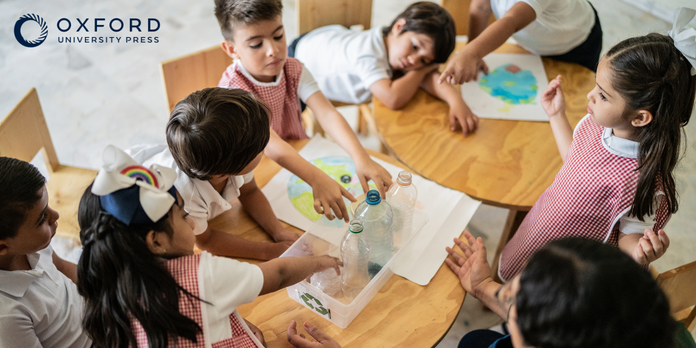Teaching young learners is a joy, but it can also be a challenge. Their energy is wonderful but often needs direction, so it’s crucial to create a structured classroom while teaching valuable life and future skills such as teamwork and effective communication. It’s also important to teach our young learners the importance of following instructions, so our lessons flow and are as uninterrupted as possible. There are many different ways we can do this. Let’s look at some different techniques and classroom management tips which can help us manage our young learner classroom effectively.
1. Focus on the strengths of each student
Every child brings something unique to the learning environment. By acknowledging and leveraging their strengths, we can create an inclusive learning environment for all our learners.
- For mixed ability classes, recognise that every student has a unique set of skills. While some might be good at reading, others might excel in speaking or writing. Encourage peer-to-peer teaching where students can learn from each other and teach each other something they love and enjoy.
- Use group activities. These are ideal for promoting collaboration, communication and those valuable life skills we touched on earlier. Design group tasks where each student plays to their strength, ensuring everyone feels valued and included. However, try to avoid too much competition within your classroom among groups, as this can sometimes lead to a bit too much energy when you don’t necessarily need or want it!
2. Positive reinforcement of behaviour
Reinforcing positive behaviour can have lasting impacts on a child’s attitude towards learning. There are many classroom management ideas, to monitor behaviour, or signals you can use to set behavioural expectations.
- Visual cues. Consider using visual cues like noise metres, cleanup charts or behaviour thermometers. These can be a fun way for students to regulate their own behaviour. For example, a noise meter or behaviour thermometer can help students understand when they’re getting too loud or overactive without the teacher having to raise their voice.
- Praise and encouragement. Celebrate achievements, no matter how small. A simple ‘well-done’ sticker or a star on your students’ work can make all the difference to our young learners.
3. Create a routine (but mix it up)
Predictability or routine can provide a sense of security when teaching young learners. By knowing what to expect in each lesson, learners can feel calm coming into the learning environment. However, be careful not to keep the routine too same-y all the time. Don’t be afraid to mix it up!
- Use both active and calm tasks. After a high-energy activity, follow it up with something calmer to change the dynamic of the lesson. By varying tasks, students will know when the right time is to bring energy to the activity, and when the right time is to do a calmer, less noisy activity.
- Surprises and mysteries. While routines are vital, occasionally throwing in a surprise can be exciting for your learners. For example, give out a mystery reward at the end of the week or have a special themed day around a topic of students’ choice.
These little surprises can motivate students and promote positive behaviour across the whole class, by having something to look forward to or work towards.
4. Seamless transitions between activities
Transitioning smoothly between activities can significantly impact the flow of the lesson. If it takes too long to catch the attention of your learners, they can easily get distracted and it can be challenging to refocus them.
- Use attention grabbers. Use catchy phrases or claps that signal it’s time to change tasks. For instance, when you say 1, 2, the students can respond with Eyes on you! Another idea is to tap the board twice and have the students stand up quickly. The student that takes the longest to stand up gets a forfeit (e.g. answering a question).
- Use visual schedules. Use visual schedules that outline the day’s activities. This helps students know what’s coming next and later.
5. Promote positive behaviour as a whole class
Not only do we want to promote an individual’s positive behaviour, but also as a whole class.
- Give out class rewards. Instead of individual rewards for behaviour, try giving out class rewards. For example, if the entire class behaves well for a week, they get to choose to play a language game they like or have a special story session.
- Allocate classroom jobs. Assigning classroom jobs like Board Cleaner, Book Arranger or Chair Stacker can help students take responsibility and also give them a purpose. Allocate the tasks on a rotational basis, so each student gets a chance to do each job.
Teaching young learners requires patience, creativity and a deep understanding of your learners’ needs. By implementing these classroom management tips and techniques and seeing what works for your class, we can hopefully create a thriving learning environment where every student feels valued and excited to learn.
Take a look at this classroom management resource pack for more classroom management tips and suggestions.
Do you have any other young learner classroom management tips to share? Comment below!


